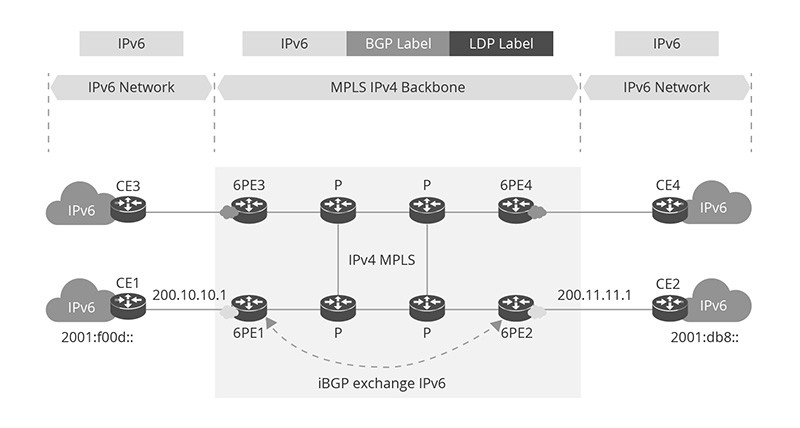Background
A leading financial enterprise, currently undergoing deep digital transformation,
has experienced explosive growth in services such as mobile payments, online wealth
management, and digital lending. This surge has led to severe IPv4 address
exhaustion, becoming a major obstacle to business expansion. At the same time,
regulatory bodies are imposing stricter cybersecurity requirements.
China's Fintech Development Plan (2022–2025) mandates that “by 2025, financial
institutions must fully complete IPv6 transformation and achieve large-scale IPv6
deployment.” Similarly, the China Banking and Insurance Regulatory Commission's
Guidelines on Digital Transformation of Commercial Banks emphasize “accelerating
large-scale IPv6 deployment.”
Solution Overview
The solution follows a strategy of “unified planning, phased implementation, and guaranteed security,” and includes:
- Network Infrastructure Upgrade: Hardware upgrades for core routers and switches to support IPv6 protocol stack. Deployment of IPv6-capable load balancing devices. Construction of dual-stack DNS systems for intelligent resolution. Upgrades to network security equipment (firewalls, IDS/IPS, etc.)
- Business System Transformation: Dual-stack upgrade of online banking systems. IPv6 adaptation of mobile payment platforms. Protocol upgrade for core trading systems. IPv6 support for big data platforms
- Security System Development: Creation of IPv6-specific security policies. Deployment of IPv6 traffic auditing systems. Enhancement of access control mechanisms. Construction of an IPv6 security monitoring platform
- O&M Management Enhancement: Establishment of a unified O&M management platform. Development of automated configuration tools. Formulation of IPv6 operation standards. Training for professional personnel

Key Advantages
- Business Continuity: Dual-stack operation ensures seamless transition. Intelligent traffic scheduling optimizes user experience. Robust fallback mechanisms enhance system safety
- Comprehensive Security: Compliant with MLPS 2.0 Level 3 requirements. IPv6-specific security strategy. Fine-grained access control
- Intelligent Operations: Unified visual monitoring platform. Automated configuration management. Intelligent fault diagnosis
- Regulatory Compliance: Fully meets regulatory expectations. Comprehensive audit logging. Professional compliance assessment

Customer Challenges
- Resource and Performance Constraints. IPv4 address exhaustion limits service growth. NAT device performance bottlenecks and complex address management
- Security Risks. Emerging IPv6-specific attack methods. High complexity of dual-stack security strategies and compliance burden
- Operational Limitations. Difficulty in troubleshooting dual-stack network issues. Shortage of skilled professionals leading to rising O&M costs
Customer Benefits
- Business Growth and Innovation. Solves IP address bottlenecks, enabling rapid service rollout.Enhances user experience and competitiveness.Lays the groundwork for digital transformation and future technology adoption
- Security and Compliance. Meets regulatory demands and reduces compliance risks. Strengthens protection against IPv6-related threats
- Efficient O&M and Cost Optimization. Reduces complexity in dual-stack environments. Improves O&M efficiency and lowers human resource dependency. Optimizes operational costs